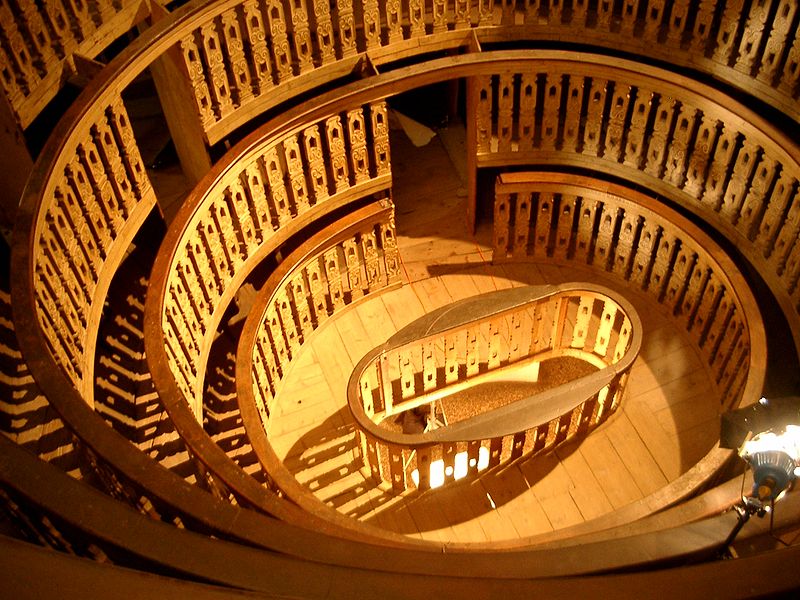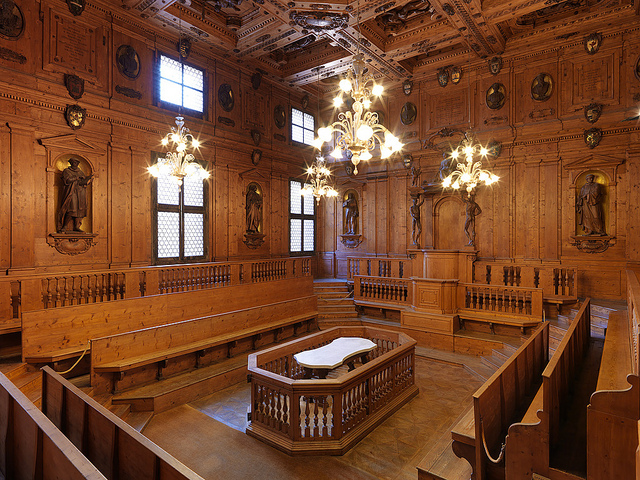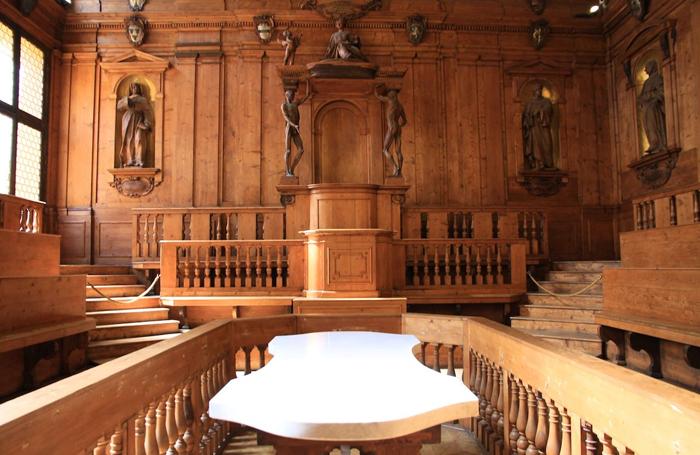words by Barry Lillie and Silvia Donati
If you’re interested in anatomy, work in the medical profession or, like me, you’re always looking for somewhere different to visit, then here’s an idea. How would you feel about visiting an anatomical theatre?
The anatomical theatre was an institution used in teaching anatomy at early modern universities: vast rooms where students could observe dissections of human and animal bodies and that have been vital in the pursuance of medicine.
The oldest anatomical theatre was built in Padua in 1594 to be used for medicine lessons at the local university. Anatomical theatres were subsequently built at universities and hospitals across Europe. Among the oldest in Italy are the anatomical theatres of the University of Bologna inside the Palazzo dell’Archiginnasio built in 1637, those of the University of Pavia and Ferrara, and of the Ospedale del Ceppo in Pistoia (18th century).
Anatomical Theatre, University of Padua

The world’s oldest surviving anatomical theatre is situated in the Palazzo del Bo at the University of Padua and was built in 1594 by the Italian surgeon and Renaissance anatomist who helped found modern embryology, Girolamo Fabricius Acquapendente.
The elliptical-shaped theatre has six tiers carved from walnut and can accommodate up to 300 spectators. The seating is arranged so that each student would have an uncompromised view of the dissecting table.
Still visible is the inscription, Hic locus est ubi mors gaudet succurrere vitae (This is a place where the dead are pleased to help the living). Following the last dissection in 1872, the theatre has been preserved, even the original table still stands and now the building houses historic surgical tools and artefacts of medical importance.
The university is one of the oldest in Europe and has many items of interest to keep the visitor entertained, including the chair and lectern belonging to the University’s greatest lecturer, Galileo.
Be sure to pass by the Sala della Facoltà di Medicina where the skulls of seven professors who voluntarily donated their body to science are displayed, as are pictures of previous eminent scholars including Bartolomeo Eustachi, one of the founders of the science of human anatomy, and Gabriele Falloppio, one of the most important anatomists and physicians of the 16th century.
The university is located at Palazzo del Bo, via VIII Febbraio, 2, Padua and has strict hourly sessions devoted to welcoming visitors, these are:
Mon, Wed, Fri. 3:15pm, 4:15pm and 5:15pm
Tue, Thu, Sat. 9:15am, 10:15am and 11:15am
Tickets cost from €1,50 to €3,00. Bookings for groups and school children must be made in advance.
Anatomical Theatre, University of Bologna

At the University of Bologna is one of the world’s most beautiful anatomical theatres. Completely carved from spruce, construction of the anatomical theatre of Archiginnasio began in 1636 and was completed in 1737, when dissections of human cadavers were performed by candlelight.
Sections of the room are elaborately decorated and reigning over the room is the carving of a woman being offered a thigh bone by an angel and carved statues of physicians like Hippocrates, Galenus, etc. stand in niches.
In keeping with tradition when surgeons would consult the stars before performing operations, the ceiling is decorated with astrological symbols in the belief that every part of the body was placed under the guardianship of a zodiac sign. This ornate decoration reflects the understanding of man and his relationship with the cosmos.
Two famous statues of the Spellati, anatomical models displaying the muscles beneath the skin, hold up the canopy above the teacher’s chair and are the work of the well-known artist of anatomical wax displays, Ercole Lelli.
On January 29, 1944, during the Second World War, the theatre was almost completely destroyed; after the war ended, the theatre was rebuilt using all of the original pieces that were recovered among the rubble of the building.
The theatre is located at Archiginnasio of Bologna, Piazza Galvani, 1 and is open to the public weekdays from 9:00 am to 6:45 pm; for up-to-date information and entrance fees, call +39 051 276811.
Anatomical Theatre, Ospedale del Ceppo, Pistoia

The Ospedale del Ceppo was established in the 13th century, making it one of the world’s oldest functioning hospitals.
It appears that medical lessons were held at the hospital as early as the 16th century. The medical school was officially founded in 1666: it was the only one in the Grand Duchy of Tuscany and prospered especially in the 18th century, when it attracted the attention of the enlightened Pietro Leopoldo di Lorena.
The school’s program took six years to complete; it was attended by a small number of students, including the famous pathologist Filippo Pacini, who is credited with discovering, in 1854, the bacillus of cholera.
Anatomy lessons were held in the Anatomical Theatre, a jewel of late 18th century Neoclassical architecture, frescoed with grottesche and medallions displaying pastel colors; the sophisticated atmosphere was in strike contrast with the function of the place. The school was active until 1844.
Inside a room is the Museum of Surgical Instruments, a collection of medical instruments used at the hospital between the 17th and 19th centuries, which gives an idea of the creativity of doctors at the time! It also displays a collection of ancient medicine books and furniture from the school and the pharmacy of the hospital.
Ospedale del Ceppo, Viale Matteotti, 9/D Pistoia. Ph. +39 0573-3521.
Museum hours:
April-September, 10 am to 7 pm every day
October-March, 10 am to 6 pm every day
Guided visits, also in English, are offered at 10.30 – 11.30 – 12.30 – 14.00 – 15.00 – 16.00 – 17.00 – 18.00 (last time only in summer).
Entrance fee €9.







